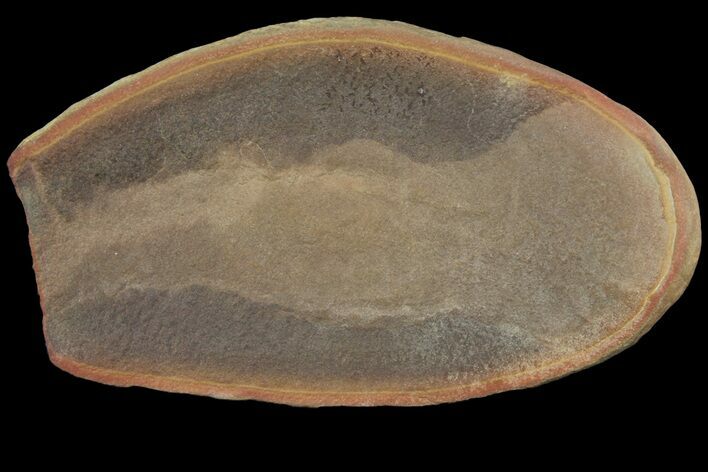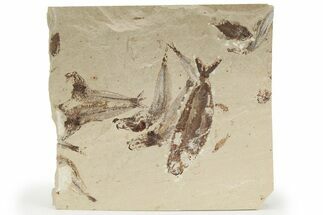This Specimen has been sold.
2.9" Partial Tully Monster (Tullimonstrum) - Mazon Creek
This is a partial fossil Tully Monster, preserved inside an ironstone nodule that has been split open. It comes from the famous Mazon Creek Lagerstätte. These ironstone nodules have been collected for decades from the spoil heaps of abandoned coil mines near Coal City, Illinois. Only the pictured half of the nodule is present. It comes with an acrylic display stand.
Tullimonstrum gregarian, or better known as "The Tully Monster", is a strange jawless fish that has been classified as a lamprey. It was originally hypothesized as being a segmented worm or swimming slug, but further studies have determined that it was most likely a lamprey. These variety of lamprey thrived in a time where northeastern Illinois was covered in water, around the mid to late Pennsylvanian period (~300-310 million years ago).
The Tully Monster was cylindrical in shape and contained a jointed, sharp claw-like appendange (proboscis) that jutted off the anterior end of the fish. It had two eyes on the superior portion of its body that branched off from the body like handle bars, along with a dorsal and tail fin. It likely fed by grasping on to its prey with its proboscis and scraping away and consuming the tissue with the help of its tongue.
It was given the name Tully Monster for both its formerly puzzling appearance and in honor of the fossil's finder/collector, Francis Tully. In 1989 it was designated the state fossil of Illinois.
The Tully Monster was cylindrical in shape and contained a jointed, sharp claw-like appendange (proboscis) that jutted off the anterior end of the fish. It had two eyes on the superior portion of its body that branched off from the body like handle bars, along with a dorsal and tail fin. It likely fed by grasping on to its prey with its proboscis and scraping away and consuming the tissue with the help of its tongue.
It was given the name Tully Monster for both its formerly puzzling appearance and in honor of the fossil's finder/collector, Francis Tully. In 1989 it was designated the state fossil of Illinois.
The Mazon Creek fossil beds are a deposit with exceptional fossil preservation, known as a conservation lagerstätte, located in Illinois. This location of late Paleozoic (~307 million years old) biota ranks among the great fossil sites around the world. The large variety of fossils collected here vary between plants and animals, including soft-bodied and insect preservations. Fossils from this site are often quite detailed and are preserved within siderite (iron carbonate) nodules.
Over 500 animal and 200 flora species have been described from Mazon Creek. The event that caused this die-off and preservation is believed to have started with a catastrophic flood event that buried the biota of the modern day Mazon Creek area. The deposition of river-borne silt and clay, brought on by upland erosion and delta progradation, contributed to the incredible preservation of one of the most complete records of Paleozoic biota.
This site has been collected for more than 100 years, and likely will continue to be collected by both professionals and amateurs for many years to come.
Over 500 animal and 200 flora species have been described from Mazon Creek. The event that caused this die-off and preservation is believed to have started with a catastrophic flood event that buried the biota of the modern day Mazon Creek area. The deposition of river-borne silt and clay, brought on by upland erosion and delta progradation, contributed to the incredible preservation of one of the most complete records of Paleozoic biota.
This site has been collected for more than 100 years, and likely will continue to be collected by both professionals and amateurs for many years to come.
SPECIES
Tullimonstrum gregarium
LOCATION
Essex, Illinois
FORMATION
Carbondale Formation
SIZE
2.9" long in 3.2" wide nodule
CATEGORY
ITEM
#113253
We guarantee the authenticity of all of our specimens.
 Reviews
Reviews











